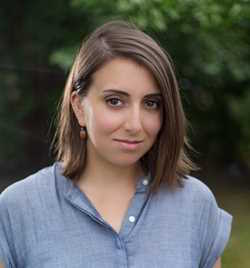Fuse Book Review: “And Again” — Biological Engineering, Predictable Construction
What’s most interesting about And Again is precisely what gets the least narrative attention.
And Again by Jessica Chiarella. Touchstone, 320 pages, $25.99.

By Matt Hanson
Not long ago, I found myself at a party thrown by biology PhDs from MIT. In the middle of a long and surprisingly fascinating discussion I was informed, without any hesitation or doubt, that genetically remodeled humans — so-called “designer babies” — will be most definitely be a fact of life very soon. How soon, exactly? My new friend excitedly told me it would start happening in the next ten years.
Due to the wonders of modern technology, and the relative ease for scientists receiving funding for research, genetic engineering might prove to be a much more pertinent topic for socially conscious writers than they currently realize. Fresh, new, and complex understandings of the relationships between body and mind generated by biological engineering might well be the next new topic for novelists with a nose for sensationalistic relevance. That when I heard the premise for Jessica Chiarella’s debut novel And Again, my interest was piqued.
And Again tells a story of a random (and in some cases, not-so-random) group of people who are selected to participate in a secret experimental medical procedure called SUBlife. Each participant receives a pristine and healthy body, but is also able to bring his or her old brain along as well, memories and personality traits intact. Each character has their own reasons to want a rebirth (and who wouldn’t?), but in some cases — a mortally ill cancer patient and a woman who has been disabled for years — the primal transition is literally a matter of life and death.
The characters are a diverse but predictable mix of personality types. Each figure is ordered to attend a hospital-mandated group therapy session in order to better deal with the inevitable psychological trauma that will come post surgery. There’s Connie, the nubile former soap opera star who is dealing with the fallout of an agonizing life based on constantly maintaining her sexual attractiveness; Linda, whose years-long bedridden paralysis makes her the most grateful of the SUBlife recipients; Hannah, a talented Chicago-based visual artist who worries that adjusting to her new body will dim her creative spark; and David, a cocky GOP congressman who worked his elite contacts to get him to the top of the list for SUBlife after his lifelong penchant for Scotch and cigars began to catch up with him.
Aside from the clunky title, what’s most disappointing about And Again is that so much of the novel’s compellingly visionary conceit is lost in the plot’s personal dramas and the character’s rather predictable storylines. Hannah and David are already fairly close to stock characters when we first meet them; their reactions to each other are too easy to see coming, which means that its dramatic interest is largely lost.
What would be much more interesting than observing the clichés of a hodgepodge of characters working to figure out the emotional truths of their post-surgery lives? A detailed description of the mysterious science (and their reactions to it) which purportedly changed their lives in the first place. SUBlife is alluded to by each character, but not nearly enough is made of the operation to make the most out of the set-up.

Author Jessica Chiarella. Photo: Shane Collins.
Since our curiosity about the characters is largely defined through their reactions to the mysterious transformation they’ve recently undergone, we need to know more rather than less about its procedures. And Again’s plot pedestrian strands are far too easily resolved to compete with the interest generated by the newfangled Faustian bargain that revs the plot into motion.
Chiarella also uses a creaky, Magnolia-esque structure which is often overused by contemporary writers of fiction. She bends over backwards to show the oblique ways in which each character is connected to the other. For example, the disgruntled beauty queen Connie once starred on a soap opera that the paralyzed Linda religiously watched for years from her sick bed. Hannah’s friend, who visits her after her surgery, just happens to be a political journalist who is chomping at the bit to reveal the truth about Congressman David’s chance to cheat death.
But what’s most provocative about And Again is precisely what gets the least narrative attention. We read more about the sexual jealousy Hannah (one of the novel’s more articulate characters) feels about her friends’ romantic relationships than what she actually experienced (psychologically/philosophically) during her surgery, which is only vaguely described. It may be that Chiarella meant to make the details of the operation more intriguing by omitting them, but this means valuable opportunities for vivid imagery and exploring the nooks and crannies of consciousness are scrimped on, a major flaw in a novel that is so dependent on its futuristic conundrum.
In a recent interview, Chiarella explains that she wanted to avoid going down the “rabbit hole” of biogenetic research, presumably because that would dominate the time she spent writing the novel. It’s an understandable concern — mastering the intricacies of cutting-edge science would be formidable. On the other hand, one wouldn’t need to get a PhD in the subject in order to use it to inspire more of an exercise in novelistic imagination.The lack of depth in this novel is all the more glaring because it comes at an ironic price: ignoring the very themes And Again‘s far-seeing and timely central concept invites.
Matt Hanson is a critic for The Arts Fuse living outside Boston. His writing has appeared in The Millions, 3QuarksDaily, and Flak Magazine (RIP), where he was a staff writer. He blogs about movies and culture for LoveMoneyClothes. His poetry chapbook was published by Rhinologic Press.
Tagged: And Again, biogenetic, designer babies, fiction, Jessica Chiarella
